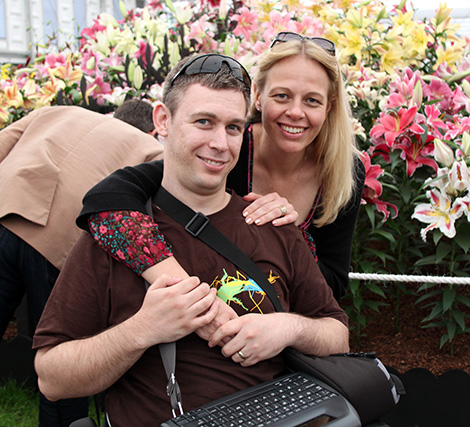Ghost Boy author shares his incredible story
Author Martin Pistorius survived over a decade with no one knowing he was capable of thought and emotion.
Rendered invisible, Martin Pistorius survived over a decade with no one knowing he was capable of thought and emotion. For most of us, it’s a nightmare scenario that will never become reality. Being trapped inside your own mind and body - unable to communicate even the simplest thought or need. Having what makes you a unique and valuable person, invisible.
Dr. Erna Alant, Otting Chair in Special Education, in collaboration with Monroe County Community School Corporation (MCCSC), Answers for Autism, and the Speech and Hearing Department at IU is bringing Martin Pistorius to the campus and community. Pistorius will give multiple presentations on his life – one of which will take place Tuesday, September 29th in the School of Education.
At age 12, Martin Pistorius fell inexplicably ill. He lost his voice and stopped eating, and within 18 months he was unable to speak and wheelchair-bound. Martin's parents were told that an unknown degenerative disease had left him with the mind of a baby and with a poor prognosis for survival. However, this was not the case. Martin was very much still mentally there, and yet, couldn’t communicate.
Pistorius’ book, Ghost Boy recounts this personal journey from that moment forward, and is currently on the New York Times bestsellers list.
Dr Erna Alant, has witnessed Martin Pistorius’ rehabilitation journey. As the director of the Center for Augmentative and Alternative Communication (CAAC) at the University of Pretoria in South Africa, she met Martin in 1998 when he came to the CAAC to consult with the professional team about ways to expand his ability to communicate.
Through Martin's story we get a glimpse of those who are unable to communicate while still experiencing the full range of human emotions and understanding. Martin’s emergence from his position of silence and darkness enables us to appreciate both the struggles of those with communication disabilities, but also the capacity for rehabilitation. And it’s why the applied research and collaboration of the IU School of Education Special Education department, and the Augmentative and Alternative Communication in Action Project are so vitally important.
Dr. Alant explains the AAC in Action Project:
Augmentative and Alternative Communication (AAC) refers to all those strategies that can be used to supplement communication. The AAC in Action project is a group of collaborators representing different stakeholders who work together to help individuals, families, and schools make a difference in the lives of those with severe communication challenges. For people with severe communication barriers like Martin Pistorius, our prestigious speaker on September 29, having state of the art communication technology and ongoing research is paramount.
Please Join Us for the presentation by Martin Pistorius:
Tuesday Sept. 29, 2015
School of Education Auditorium Room 1120
5:30–7 pm — Open to the public

